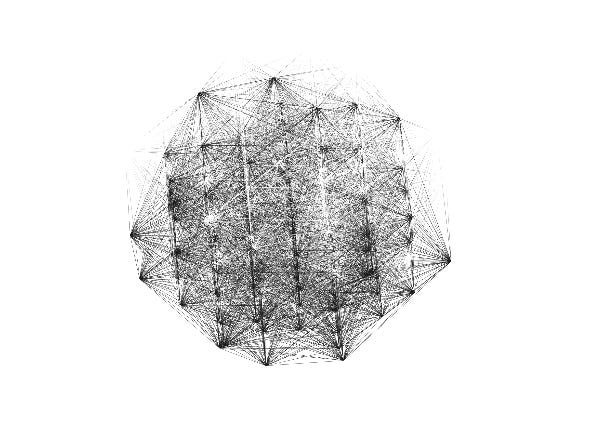The Bittensor Toolbox: Essential Resources for Navigating the Decentralized AI Ecosystem
From confusion to clarity without writing production code
Three months ago, I stared blankly at the Bittensor whitepaper, understanding less than 10% of it.
Today, I can navigate the entire ecosystem and I haven't written a single line of meaningful Python code yet. Here's how...
When I first read the Bittensor whitepaper (Issue 2), I was overwhelmed by concepts that seemed impossibly complex. What changed everything was discovering the right tools to break down these concepts into manageable pieces.
Today, I'll share my curated toolbox. The resources that have transformed my understanding of Bittensor so far from theoretical confusion to practical application.
A Note On My Steep Learning Curve
Firstly, I want to be transparent: my Python journey is progressing slower than I'd hoped.
Despite dedicating time each week to learning the basics; exploring Machine Learning concepts and practicing Data Science projects on Kaggle, I'm not yet at the point where I can share meaningful code snippets or demonstrate practical implementations with the Bittensor SDK.
Unlike centralized AI companies that control all information about their systems, Bittensor thrives on community knowledge sharing, but as a newcomer with limited coding skills, it presents a unique challenge:
How do you navigate this landscape efficiently when you can't yet read the code that powers it?
This is why these tools have become so valuable to me. They let me engage with the Bittensor ecosystem at my current skill level.
The Essential Bittensor Tool Categories
Learning and Education Platforms
A well structured, beginner-friendly educational resource run by Maciej Kula of Latent Holdings and the first place I would point someone who wants to start fresh with this ecosystem. Its where I wish I'd started!
It breaks down complex concepts into digestible modules. I follow the subnet-specific guides while while cross referencing the concepts provided to enhance my knowledge of Bittensor.
The official Bittensor documentation and whitepaper is also hosted here.
Created by one of the Bittensor OG's on X, this is genius. A mind map of the Bittensor ecosystem, its perfect for visual learners who need to see how subnets interconnect.
This is where you can find all the resources you need to deep dive into whatever area works for you.
I use this as a starting point when I want to research something new on Bittensor.
The official website of Bittensor by Opentensor Foundation. You can also find the whitepaper here under Resources.
Subnet Analytics and Explorers
A comprehensive subnet directory with real-time metrics, this transformed how I evaluate subnets beyond surface-level hype.
You can use it to gain a good understanding of any subnet while also tracking things like emission rates and other subnet health metrics.
A resource with many use cases, among many other things, it is a detailed blockchain explorer focused on TAO metrics.
You can manage your stake, portfolio and API access all from here.
As any world weary crypto investor knows, understanding tokenomics is crucial for long-term participation. This is the place for that analysis. I also use it to monitor staking yields and inflation rates to inform my investing strategy.
Financial Analysis Tools
A financial analytics platform specifically for Bittensor.
It helps to bridge the gap between technical understanding and financial reality.
While I don't trade actively between subnets, I have used it to analyze ROI metrics for different subnets before committing resources.
You can trade actively on the platform with zero fees and they also have a useful trading bot that lets you trade directly through Telegram on any device without giving away your private keys.
A new visual oriented subnet explorer with a beautiful interface. Its still in beta (isn't everything on Bittensor) but I have been testing with invite access this week and have been hugely impressed.
It helps to makes complex data accessible at a glance, I love being able to compare similar subnets to differentiate between them. Upcoming features like the Portfolio Simulator and deep dives on each subnet make this one to watch going forward.
Community Resources
X (Twitter)
The primary communication channel for the Bittensor community.
Its where real-time discussions and announcements happen.
While I could go into details of who to follow, I won't do that here as its too easy to get swallowed up by the dopamine fueled rabbit hole and spend your whole day doom scrolling instead of doing any meaningful work.
First port of call, I would suggest to join a Bittensor focused community like $TAO Bittensor Community. From there, you can get an idea of the pulse of the industry and follow any interesting accounts.
You can also follow me and you can see what I am following (I'm not hugely active for now and like to save my best stuff for here).
I use it to follow core developers, key subnet owners, and active participants.
You can create your own dedicated lists for different communities and stick to these and your Following tab, this will keep you out of the dreaded For You section on X that drags you into a black hole of scrolling content.
Discord
A real-time community hub for deeper discussions in the ecosystem. This is where you can get answers to specific technical questions.
I join subnet-specific servers when I'm ready to get involved and learn more.
My favorites:
Bittensor - the official server where you can get answers to any general questions (buying and selling is not discussed here).
Tao Community - A community maintained server where discussions surrounding financials and external projects are supported. Every subnet has a channel here with regular interaction.
The Church of RAO - great for technical questions around the blockchain and its surrounding libraries.
There is a free limit of 100 discord servers to join, if you get anywhere near that number you will get relentlessly pinged.
My advice is to disable the notifications at server level or only let notifications through if they are @everyone mentions which generally are only used for important announcements.
Be ruthless with your time and mute or leave servers if you have no intention of learning or participating.
Multimedia Learning
YouTube Channels
Novelty Search (Opentensor Foundation): Weekly Insightful interviews with Bittensor developers and community members. Run by the foundation, can get very technical but worth tuning into and researching anything you don't understand.
Hash Rate: In-depth analysis of blockchain trends by Mark Jeffrey, an early adopter to many new tech trends over the years. Now primarily Bittensor-focused.
TAO Templar: Bittensor educator and evangelist providing concise guides on everything Bittensor. Great for newcomers.
Siam Kidd: Runs a Bittensor Revenue Search series exploring the financial viability of subnets, hosted by the co-founders of the world's first 100% Bittensor hedge fund.
Podcasts
TAO Pod: Thought-provoking discussions between two Bittensor big hitters: James Altucher and Joseph Jacks, on the future of AI and decentralization. This is a new podcast with only 4 episodes so far as of writing but is already a firm favorite with me. It perfectly blends the technicalities with the philosophy of decentralized AI, making it easily accessible from beginner to advanced level.
TAO Talk: Community driven conversations about the latest developments in Bittensor. Investment (price) focused.
Bittensor Guru: Run by OG Bittensor validator Keith Singery, he explores subnet developments, validator dynamics, and ecosystem projects.
My Personal Tool Stack Evolution
Here's how I combine these tools for maximum effectiveness:
Start with Learn Bittensor and Magellan to understand concepts.
Use Subnet Alpha and Tao Stats to explore the subnet ecosystem.
Cross-reference with Backprop Finance for financial viability.
Engage with Discord and X communities for specific guidance.
Supplement with YouTube and podcasts to stay updated, refine my investing thesis and gain different perspectives.
This workflow has transformed my approach from theoretical understanding to practical implementation.
Instead of just reading about tensor standardization, I could now see how it actually functions across different subnets, such as in Masa (Subnet 42- Issue 3).
My Python journey is slow, but these tools let me engage meaningfully while I build those skills.
True understanding comes from applying knowledge, not just consuming it.
And sometimes applying knowledge means knowing which tools to use when you can't yet code your way through a problem.
Get Involved
In a future issue, I'll hope to share how I'm using these tools to select my first subnet to actively participate in beyond just theoretical understanding.
If you have specific tools that have helped your Bittensor journey while you were still learning to code, I'd love to hear about them! Thanks for reading.
Until next week.
Cheers,
Brian





